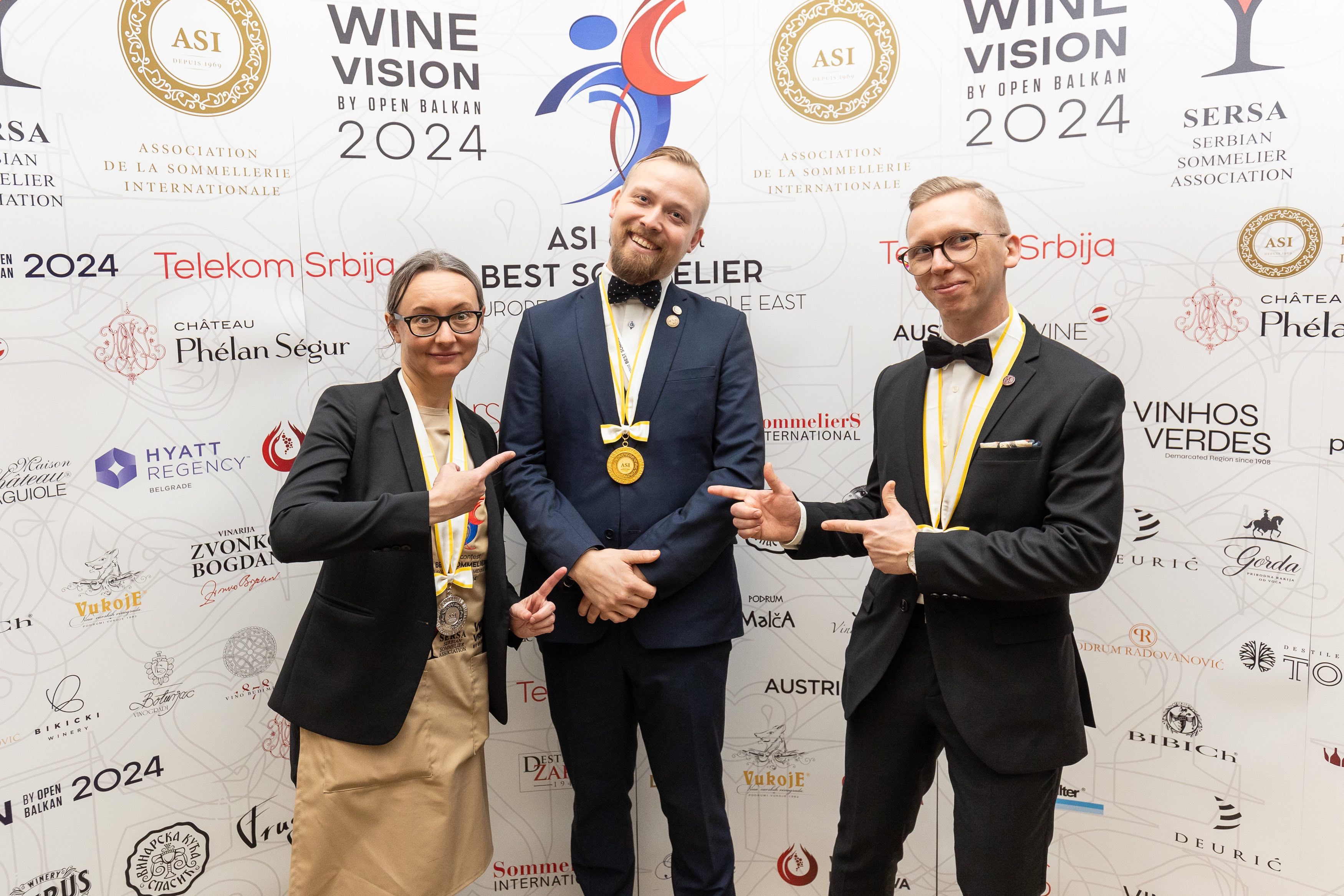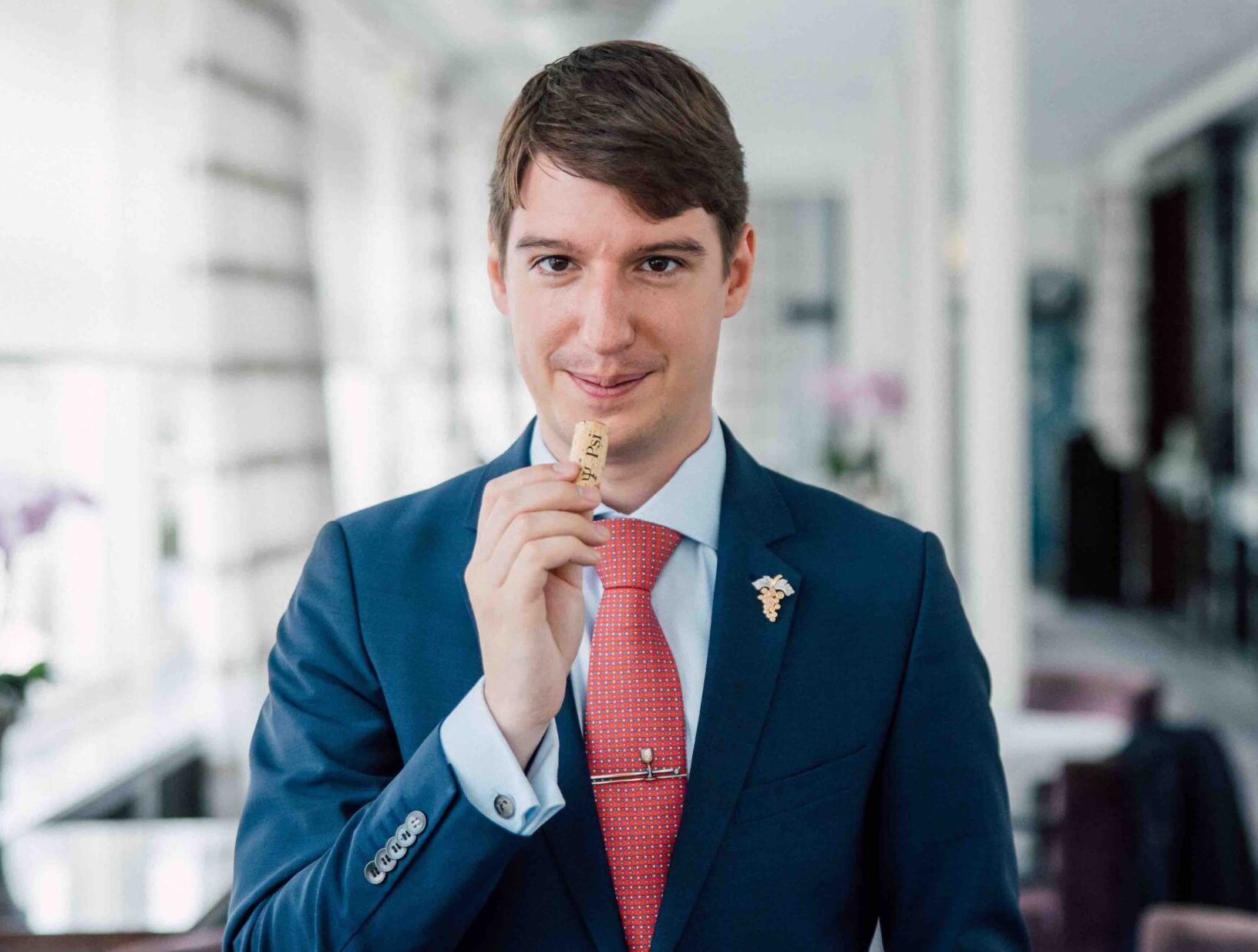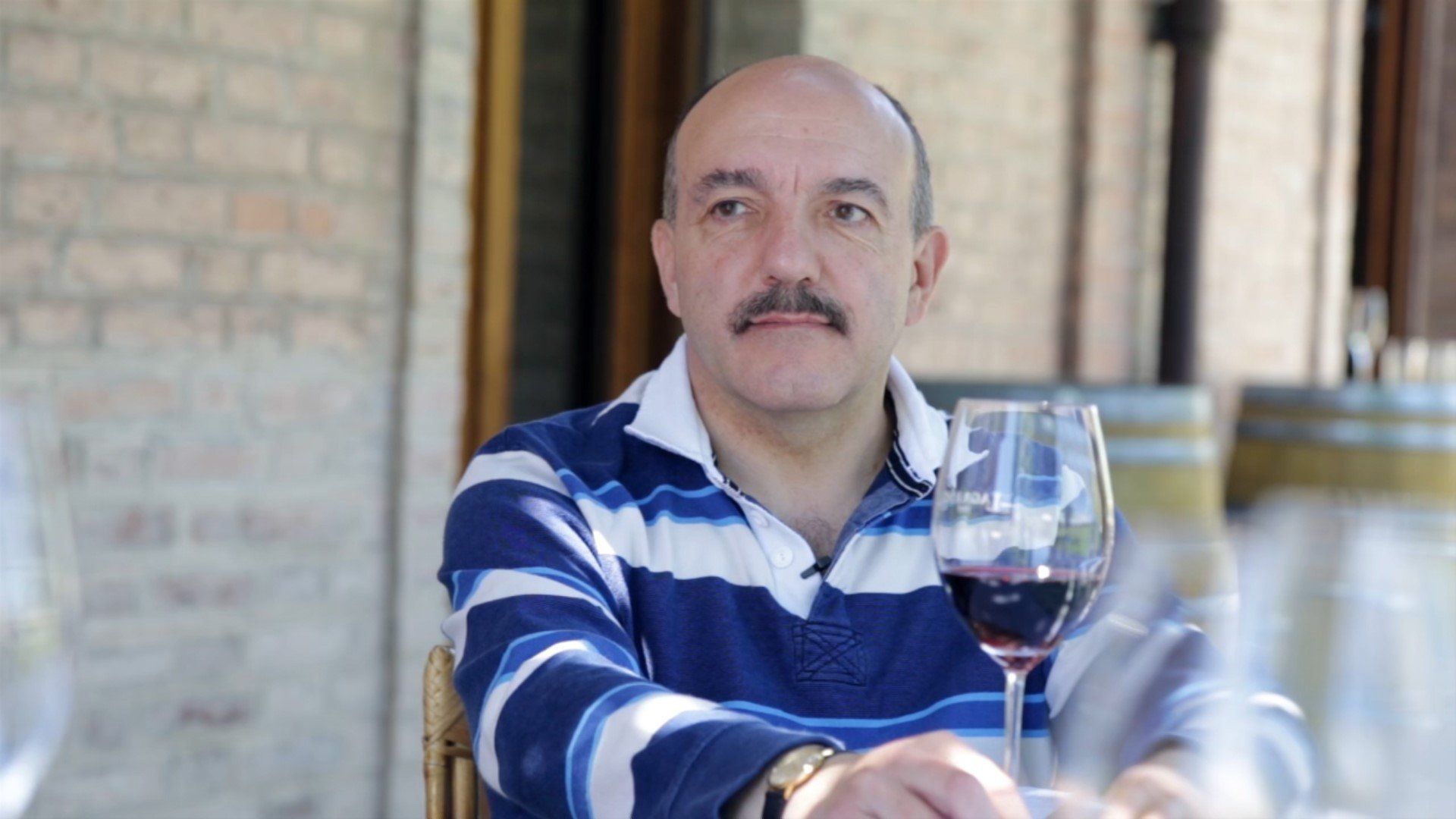The contest to find the Best Sommelier for Europe, Africa and the Middle East is all about celebrating the art of service, and those skills were very much in evidence on the crowded stage of Serbia’s National Theatre, as the three finalists battled it out to stay focused and calm as they faced a daunting volley of exam questions, tasting challenges and service tasks.
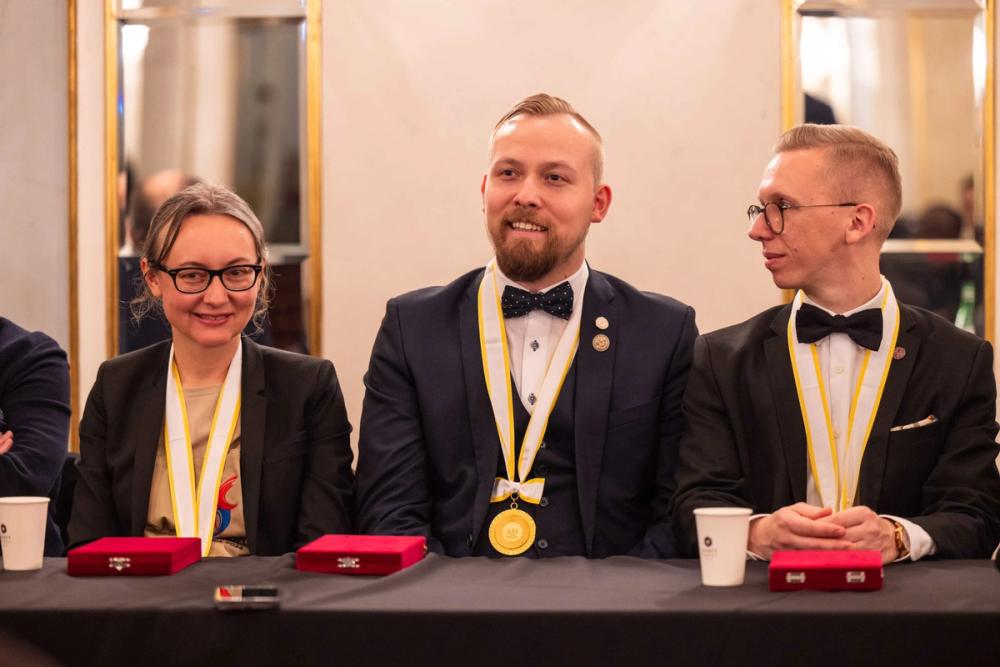
The three finalists...
Mikk Parre of Estonia, Lithuania’s Martynas Pravilonis and New York-based Pascaline Lepeltier, representing France, had already won selection in their home nations, before powering through the quarter and semi finals to make it through to the final three, performing live on stage in front of an audience of fellow somms, press, sponsors, dignitaries and ticket holders in an event organised by the (Association de la Sommellerie Internationale (ASI) and hosted by the Serbian Sommelier Association.
The three finalists were asked to draw a number, to indicate the order in which they would perform, with Parre going first. Each candidate performed exactly the same routine, under strict time conditions, so Pravilonis and Lepeltier were locked away backstage, to ensure there could be no advantage from seeing proceedings unfold.
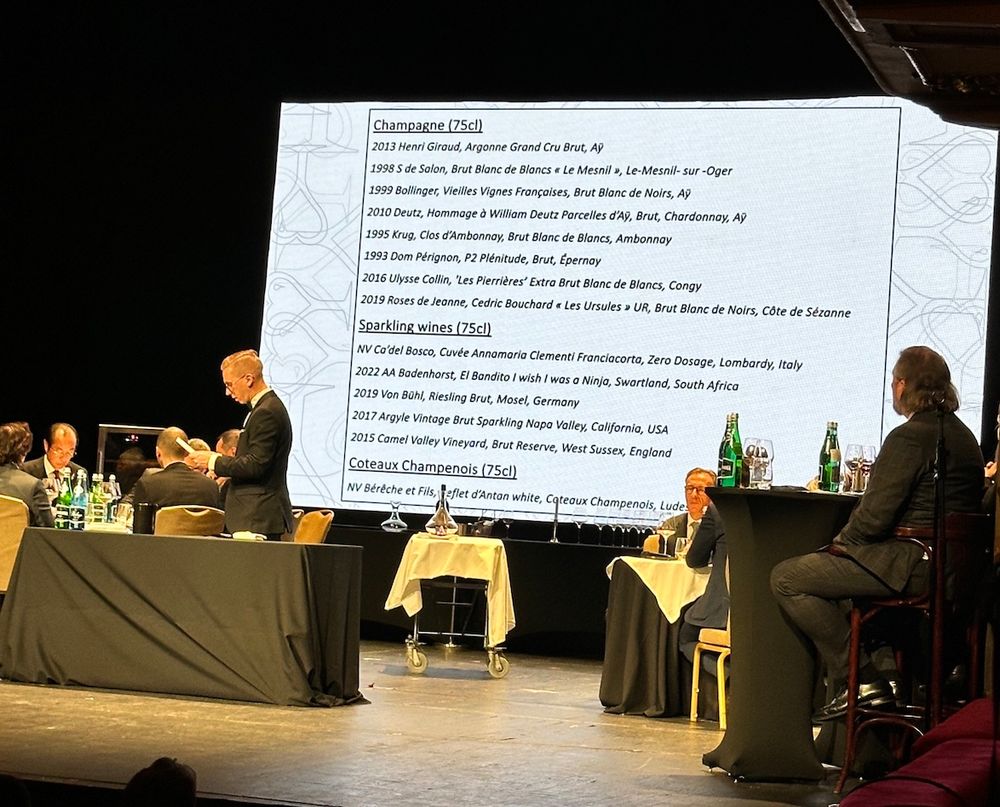
Each contestant had to go through a series of live sommelier challenges on stage
First task
The first task, allocated eight minutes, entailed serving a table of three guests “a glass of Austrian Champagne (sic), a glass of Champagne and a glass of Sake” from a selection of wines provided on a bar. This seemingly straightforward service task felt pressurised and was accompanied by distracting questions from the guests, seeking a detailed account of the pyramid of quality for Austrian Sekt and asking whether it was possible to have ‘Champagne from California’, the latter answer requiring a degree of diplomacy.
Pravilonis coped calmly with a gasp-inducing calamity, as a wet Champagne bottle slipped from his hands, crashing noisily onto the table while spraying him with Duval-Leroy (something he disarmingly dismissed as a ‘Champagne shower’ during the post-event press conference).
Second task
(You can watch a full recording of the grand final here)
Next, confronted with two glasses of red wine, each candidate was given eight minutes to conduct an assessment, offering a full organoleptic description, followed by an additional question asking what the two wines had in common. The answer, it was later revealed, was that both came from the same place: Masseto 2018 Tenuta dell’ Ornellaia and Massetino 2018 Tenuta dell’ Ornellaia.

Mikk Parre going through the cognac challenge
Third task
The third challenge, allocated three minutes, entailed identifying four spirit beverages, later revealed to be Cognac, specially produced for the event by Hine: Grande Champagne 2020, Borderies 2020, Petite Champagne 2020 and Fin Bois 2020. The second part of the task involved placing the individual glasses on a map of the Cognac region, to correspond with their respective source.
Fourth task
To follow, it was another service task: select and pour a Moldovan red wine to a table of diners, with eight minutes allocated. The wine featured some sediment, so decanting and careful pouring was required, along with the suggestion of menu pairings.
At one stage, one of the guests also asked for a glass of sparkling Nigorizake Sake. Sadly for Lepeltier, who was performing strongly, time was called before the Sake could be served. Briefly visibly dismayed, she quickly regained her composure. A source with intimate knowledge of the judging process later told me that an unfinished task can be costly in terms of points.
Fifth task
Challenge number five was to identify a series of 11 errors on a wine list, in four minutes, ranging from a vintage of S de Salon Champagne that was never made, to a Brut Riesling that came from the wrong German region and even the re-location of Camel Valley from Cornwall to West Sussex. All three candidates appeared to perform very well in this challenge.
Sixth task

The sommeliers who got through to first stages of the grand 2024 final in Belgrade, Serbia
There was another blind tasting challenge to follow, with eight minutes to identify five beverages and their methods of production. Muscat was the unifying factor, coming from different locations in contrasting styles.
Seventh task
Finally, all three frazzled candidates were brought back on stage for a picture task, with 15 seconds to identify and write down what they saw, ranging from an optical sorter to the Lincoln County process for Tennessee whiskey.
After some jury deliberations, the tension was palpable as ASI President William Wouters took to the stage to announce the results: Pravilonis was in third place, Lepeltier second and Parre was victorious. All three finalists performed with aplomb and, to those of us merely observing, the battle between first and second must have been fairly close, though the judge’s deliberations remain secret.
The reigning champion, London-based Italian, Salvatore Castano, a senior IWSC judge, was on stage to pass on the winner’s medal, while Britain was represented by the highly respected Vincenzo Arnese, wine director of Raffles at the OWO, who came 15th overall, a measure of the calibre of those competing for the coveted title.
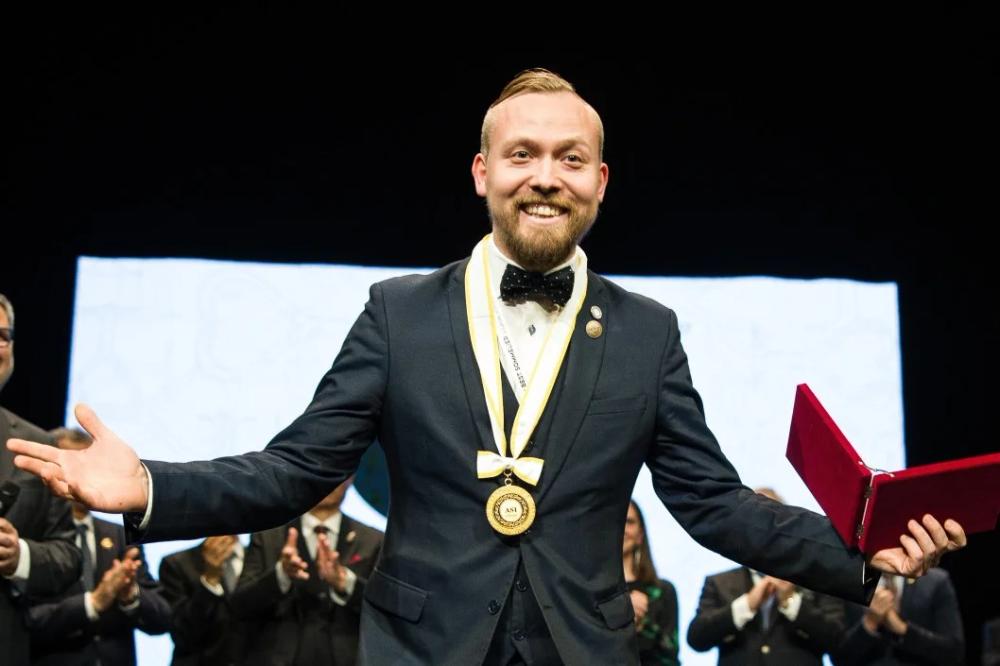
The victorious Mikk Parre
Speaking after the event, Wouters said: “This contest is a celebration of the remarkable skill and dedication our candidates bring to the world of wine. Serbia’s vibrant culture and hospitality have provided a perfect backdrop for this year’s competition, creating an unforgettable experience for our candidates and attendees alike. We are so proud to have Mikk Parre as our winner. Mikk embodies the excellence, integrity, and passion that ASI stands for, and we are confident they he will serve as an outstanding ambassador for the global sommelier community.”
Next morning, Parre retained his signature sense of understated calm, telling me it was yet to sink in: “I think it definitely will take some time for everything to settle in, at the moment it’s just a mix of a little bit of happiness, a little bit of dread and a little bit of awe.”
His response to the question: what makes a good sommelier? “I think the most important thing is humanity, you have to be the people. I think most sommeliers are people pleasers.”
* To find out more about the ASI and the competition go to its website here.
